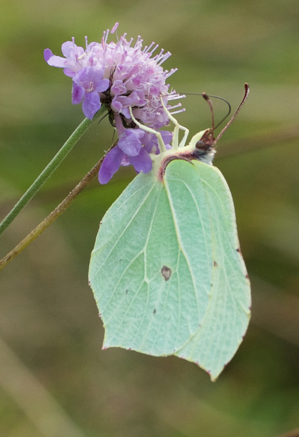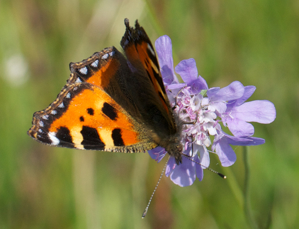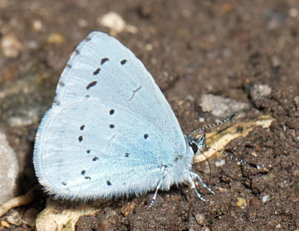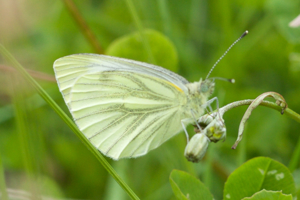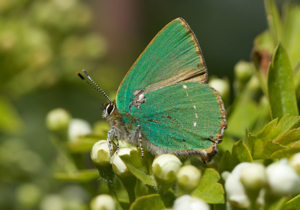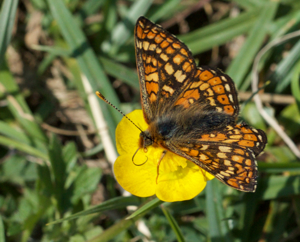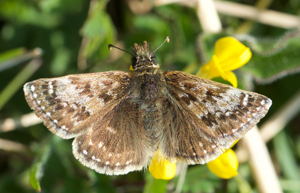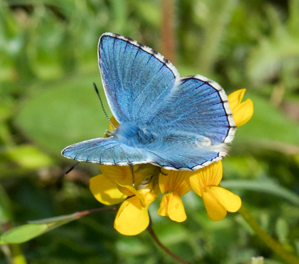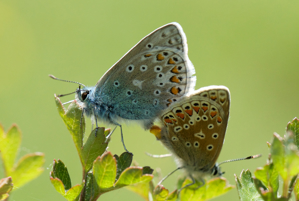Butterfly monitoring on Coombe Bissett Down nature reserve is carried out weekly from April 1st every year by teams of volunteers walking a set route and recording species and numbers present in twelve sections.
Covid 19 Lockdown started on March 23rd, with “Stay at Home” restrictions for us all, though not for the butterflies! Living in the village, we were able to visit on foot to carry on the survey, and also make many other visits as part of our “daily exercise.” We would like to share with you here some of the interesting and beautiful butterflies that were seen during this time until restrictions were eased in mid-May.


